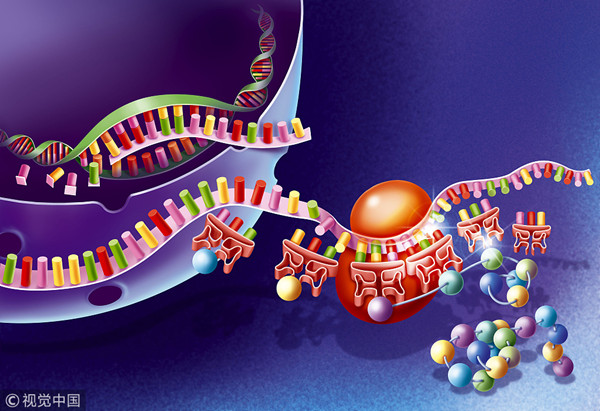Technique may boost accuracy of gene editing


Chinese scientists have established a method to analyze and eliminate gene editing attempts that stray off target.
Gene editing, which offers a prospective medical treatment for rare diseases, often affects not only the target genes but also surrounding genes and other parts of the DNA and RNA, which may result in cell dysfunction and even cancer.
Yang Hui, a leading researcher on the team from the Center for Excellence in Brain Science and Intelligence Technology, Chinese Academy of Sciences, said that some established gene editing tools for DNA could induce a considerable number of off-target mutations in RNA, which acts as a messenger for DNA.
"Some affect cell proliferation and others lead to a large number of mutations in tumor suppressor genes as well as genes connected with cancer," Yang said.
The researchers optimized the way enzymes interacted with RNA, and they engineered gene editing tools that caused zero off-target effects.
"This technique has surpassed all the previous ones in specificity and accuracy, providing insights into a safer and more precise genetic editing tool in the future," Yang said.
He said the team will proceed with lab tests on other animal models and hopefully promote the technique clinically in about two years.
A paper about the study was published on Tuesday on the website of the UK-based journal Nature.
In March, the research team published a paper in Science outlining a way to detect off-target effects in DNA caused by gene editing and found all the main gene editing tools had problems hitting their targets.
"At least one domestic company and another in the United States that planned to soon promote gene editing clinically to treat thalassemia patients halted their projects after the paper was published," Yang said.
It does not mean that such gene editing tools do not work anymore. Instead, the detection method will help modify and improve the tools, said Poo Mu-ming, an academician at CAS and director of the Institute of Neuroscience of CAS.
- Man sentenced to death for killing ex-girlfriend in Anhui
- A US youth reflects on the 'cave-dwelling conversation'
- China unveils first AI model to gauge weather's impact on stock market
- Tianjin launches youth program to cultivate university talent for tech market
- Local farmers combat desertification in Moyu county of Xinjiang
- N China's Hohhot launches winter amusement programs to boost local economy





































